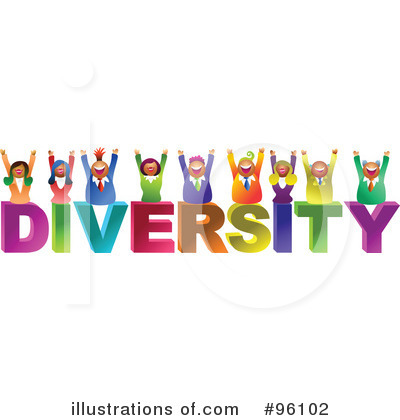Stereotypes lead to what is perhaps the most severe barrier to intercultural communication: prejudice, a deep-seated feeling of unkindness and ill will toward particular groups, usually based on negative stereotypes and feeling of superiority over those groups (O'Hair & Wiemann, 2012).
Therefore, I hope that all children and families I work with
can change any discomforts into comforts, for example, starting with children
and families' communities and schools. What I have learned, when children and
families feel a part of the dominant culture their achievement and success are
clearly in their destination.
In addition, these are my goals, I would like for the early childhood field related to the issue of diversity: Different, Individuals, Valuing, Each other, Regardless of, Skin, Intellect, Talents or, Years.
In addition, these are my goals, I would like for the early childhood field related to the issue of diversity: Different, Individuals, Valuing, Each other, Regardless of, Skin, Intellect, Talents or, Years.
1. To keep the early childhood field knowledgeable of new anti-bias workshops.
2. To help educators to grow and expand on anti-bias skills.
3. To encourage families and communities to participate in anti-bias workshops.
Secondly, I have learned and understand as my anti-bias education move forward, to keep in mind that equity is important to all cultures, children, and to their families. That equity should be represented in children's classrooms, for example, toys, books, and the classroom environment. In addition, resources should be access to all communities.
Thirdly, social justice has to change from "unfair" to "fairness." One of the finest hopes we can have for our children is to give them a just world-a world that recognizes human beings they are; a world where every child has equal access to the opportunities to become all he or she can be. Early childhood educators care deeply about what happens to children (Derman-Sparks & Edward, 2010).
Lastly, I like to thank Dr. Klein and my colleagues for
supporting me on this journey. What made
this course enjoyable and powerful are the feedbacks from your early childhood journey,
your career experiences, and your opinions.
Thank you for teaching me your views on diversity.
Reference:
O’Hair, D., & Wiemann, M. (2012). Real Communication: An introduction. New
York: Bedford St. Martin’s Baltimore.
Derman-Sparks, L., & Olsen Edwards, J. (2010). Anti-bias
education for young children and ourselves. Washington, DC: NAEYC.

 EXPECT DIFFERENCES
EXPECT DIFFERENCES 